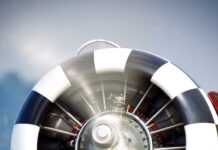A thorough briefing is the best way to avoid problems when planning a jet vehicle vs. airplane “race.” Here are a few of the many issues that should be discussed and de-conflicted during that brief.
Expectations: Usually, the desired result is that the truck catches and passes the aircraft at the last second to win the “race.” But everybody involved should agree on how important that outcome is. Is it worth taking risks? Probably not, but the pre-briefing is the place where pilot and driver should discuss the relative importance of achieving the desired outcome.
Winds: Cross winds have the potential to push the aircraft closer to the jet vehicle.
Speed: Some aircraft are simply too fast to put on the kind of show that everybody is looking for.
Experience: Has the aircraft pilot raced a jet vehicle before? Nobody wants to look like a rookie, so the pilot may not volunteer the fact that this will be his/her first race. If the pilot is inexperienced, that doesn’t necessarily mean that he’s the wrong guy, but it does mean that the briefing should be particularly thorough.
Radio communications: What frequency? What are the expected radio calls? What are the lost radio communications contingencies?
Sequencing: Very specific here. How many passes? When will the jet vehicle launch? At what point on the runway will the jet vehicle decelerate and deploy drag chutes?
False start: What happens if the jet vehicle doesn’t launch as briefed? This happened at a show in Florida several years ago. The pilot tried to fix the problem by executing a hard pull at low level with the goal of looping back around to give the jet truck driver another opportunity to start the race. The loop was too tight and the pilot was killed when he crashed near the bottom of his impromptu loop. Brief the unlikely “what if” scenarios so that nobody is making poor decisions at the last second.
Beware of the smoke: Cross winds can cause the smoke to drift over the runway and, because the airplane is ahead of the truck, this can completely obscure the driver’s vision of the race course. A pilot must be aware of this and turn off the smoke before reaching the truck at the starting line.
Position of the aircraft relative to the jet vehicle: Several years ago, a pilot positioned his aircraft almost directly behind the jet vehicle. When the vehicle crashed (with no serious injuries to the jet truck driver), pieces starting flying into the air and almost hit the aircraft. The proper position of the aircraft relative to the jet vehicle should be discussed during the brief.
Don’t be casual about these aircraft vs. jet truck races. Brief thoroughly. Build margin of error and escape routes into your performance. And be careful.








